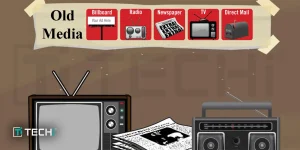The SEC doesn’t get it. Most journalists don’t like it. It seems that everyone from Silicon Valley to Washington DC are down on Demand Media’s push to go public with a $125 million IPO.
“From the very beginning, we set out to create an entirely different kind of media company,” reads Demand Media’s
Manifesto.
That, they’ve done, and as a result they’re mired in red tape as they try to make everyone understand that their “content farms” are not only potentially profitable but that the way they handle their accounting is exactly the way it should be.
Demand has 17,000 freelancers supplying content to their network of sites. They pay somewhere between $15 and $30 on average for pieces of content that are “evergreen”. From an accounting perspective, they amortize the expense of the content over 5 years rather than account for the content expense up front the way that everyone else in the industry does.
It makes their books look stronger than they really are from a traditional perspective, which is why the SEC wants so much clarification. In reality, it makes the books look exactly the way they should because the content they pump out is a “gift that keeps on giving” from a profit perspective.
Rather than hard hitting titles that focus on today’s news, Demand Media sites like
eHow have their freelancers write stories like “How to play UNO.” Seems boring, right? Who would want to know how to play UNO, since everyone who had a childhood knows how to play UNO?
Using Google’s Keyword Tool, it’s clear that people want to know. The term “How to play UNO” shows 8,100 searches a month while “Play UNO” shows over 40,000 searches a month. eHow’s article ranks #1 on Google for both terms.
Take a look at a screenshot of the article. There is one thing that is prevalent.

In a comment
Kara Swisher’s AllThingsD post,
Jason Calacanis writes:
“While I’m not sold on Demand’s claim to having a *proprietary* technique to figuring out how much money they can make, I do think there is a logical argument to spreading the cost out for a piece of content on the internet. It’s not like an article on eHow stops generating revenue after three months–like a magazine article or print newspaper might (or, largely, does–there are archives, resales and reprints after publication–maybe 10% of total revenue).”
Why Journalists Hate It
The business model is sound even though it seems junked up on paper. We’ll give the SEC a pass on why they don’t understand it (yet). To amortize content that is produced today even if it has a strong potential to produce revenue indefinitely seems like “creative accounting” to the extreme even if in reality it’s the right way to account for it.
Journalists, on the other hand, have an entirely different motive. To us, the content sucks. We work hours on stories researching and putting together content that is supposed to unveil the truth, inspire action, or depict an opinion that others can agree with or pan. Demand Media freelancers can pump out a story in 15 minutes and have it fulfill the journalistic requirements for publication.
It is search marketing journalism and it puts a bad taste in our collective mouths. We could write a comprehensive story titled “The History of Uno and Why It Exemplifies the Downfall of Western Civilization” and over time it won’t get the same number of eyeballs as the eHow tutorial.
But that’s the point, and it’s also why Demand Media business model is gold. Understanding how the search engines work and creating a gigantic network that will print more money as the network grows may tarnish what it means to be a journalist, but from a business perspective it makes more sense than most other content business models out there.
I only wish I would have come up with the idea. When (if) they finally do come out with their IPO, buy.
 In a comment Kara Swisher’s AllThingsD post, Jason Calacanis writes:
In a comment Kara Swisher’s AllThingsD post, Jason Calacanis writes:




